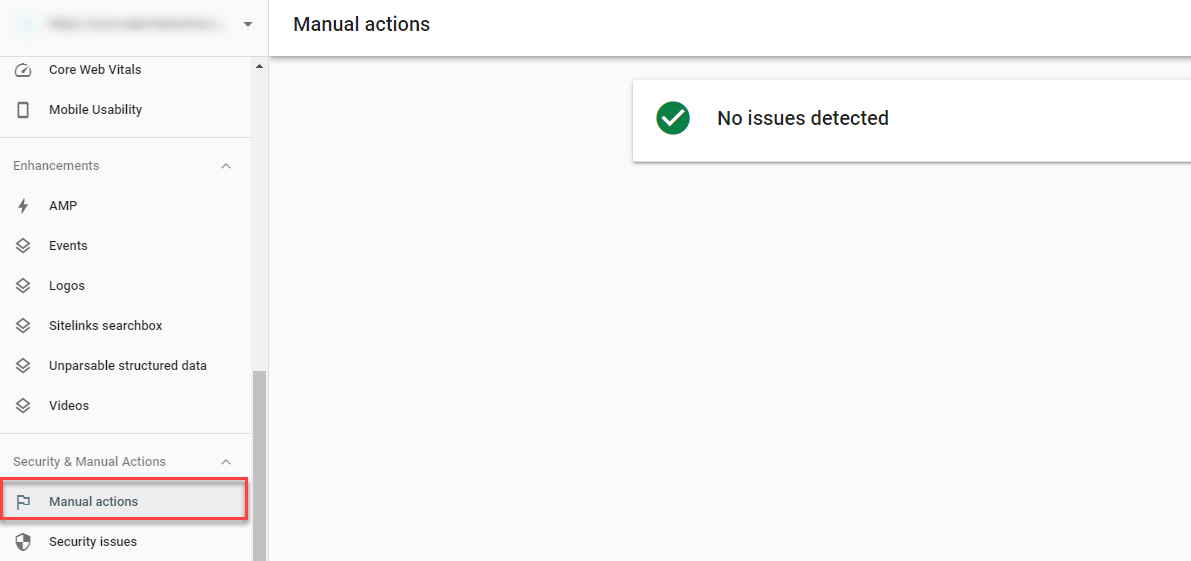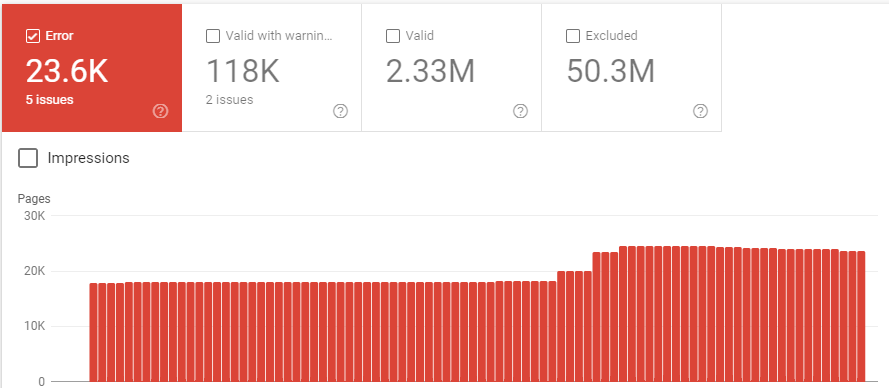Disavowing Links
On the Technical SEO Team at Seer, we often get asked if using Google's Disavow Tool is the answer to a link-related problem the client is dealing with. In most situations, the answer is no.
Below are some reasons you should and should not use the Disavow Tool from Google for your website.
When Should I Disavow Links?
There are very few instances where disavowing links should be an option. In most cases, you will know if you need to use the Disavow Tool because either:
- Google says you should (via a notice in Google Search Console)
- You knowingly participated in link manipulation
If your website doesn’t fall into one of these cases, then you probably do not need to use the Disavow Tool.
If Google Manually Penalizes Your Site for Spam Links
If you receive a manual penalty from Google, you will want to use the Disavow Tool to help clean up the penalty and start recovery. This is a reactive reason to use the tool.
You’ll know you have a manual penalty by looking in Google Search Console under Security & Manual Actions. From here click “Manual Action” and you will either see a notice explaining the penalty or “No issues detected”.
If there is a penalty, you’ll want to explore using the Disavow Tool to help fix the issue:

Someone Purchased Links to Your Site in the Past
The first scenario is a retroactive one because Google has already discovered the offending links and penalized you.
On the other hand, you might not have received a manual penalty from Google yet -- but if you’ve purchased links in the past then you could be at risk of receiving a manual penalty. We’re going to be proactive in this case, and disavow those links we know were purchased.
You might not even be the one responsible for buying the links, but maybe an agency you hired to do SEO work on your site used black or grey hat measures to get links to your website. This could make it very difficult to know what links were acquired “correctly” versus links that were obtained in a black hat way.
If these links are discovered, Google might penalize the website.
Attempt to Manipulate Rankings Using Links
Like purchasing links, ill-received or mistagged links whether purchased or not can come back to haunt your site.
Buying links isn’t the only way to end up with links that could end up being toxic for your site. Other links that could pose harm to your site include:
- Links obtained through hacking
- Guest blogging with the sole purpose of swapping links
- Participating in link farms or schemes
- Not correctly marking up an affiliate or sponsored links
Rare Potential Other Use Cases
There are cases where your website might be on the receiving end of a negative SEO attack, where someone is pointing thousands of bad links towards your site in an effort to tank it or get it penalized.
In this scenario, using the Disavow Tool might be an option if you do not trust Google to be able to identify this as an attack and devalue those links rather than penalizes your website. But even in this scenario, Google is good at understanding attacks like this, so you probably still don’t need to use the Disavow Tool.
These are all actions that would prompt us to consider using the Disavow Tool. The reason is, in these scenarios, there is an actual risk of harm to your site, or in the case of receiving a manual penalty, harm has already happened to the site.
When Shouldn’t I Disavow Links?
With so few actual situations where we recommend using the Disavow Tool, that means there are a whole bunch of scenarios to not use it in!
Here are some reasons you should not use the Disavow Tool:
- Receiving links from spammy websites
- Minor drops or fluctuations in organic traffic
- Minor drops in rankings
- Because an SEO tool highlighted spammy links
These all could be symptoms of a reason you’d need to disavow a link, but not likely. Disavowing links would be the last resort in these types of situations. Why? Unless your website falls into one of the use cases we discussed earlier, bad links are not the cause of performance issues.
Receiving Links from Spammy Websites
Every website, given enough time will attract spammy links; it’s just part of being on the web. It’s normal.
These types of links are not a concern. Google can tell the difference between random spammy links and links meant to manipulate search rankings. Google is not going to penalize you for spammy links.
These types of links do not need to be addressed via the Disavow Tool.
Temporary Drops or Fluctuations in Organic Traffic or in Rankings
If your website is experiencing temporary drops or fluctuations in organic traffic or rankings it is extremely unlikely that bad links are the cause.
💡 Here are 18 ways to diagnose organic traffic declines.
The reason being is that if links were the cause of the drops or fluctuations you would know because GSC would show you a manual penalty. Also, when a website is manually penalized, the ramifications are not temporary and do not fluctuate. You would see a sustained decrease across the board in rankings and traffic.
If you find yourself facing this situation we would suggest starting with looking in Google Search Console to check if there are any manual penalty notices. If not, then bad links are not the issue.
From there we would start with looking at if there are any recent site errors that are contributing to the traffic/ranking fluctuations.

If your Coverage chart has a large increase in errors, that could be your cause for traffic and rankings issues.
I’d also check to see if changes were made to the robots.txt, XML Sitemap, server configurations, headers, and meta tags before I even consider disavowing links.
Because an SEO Tool Highlighted Spammy Links
SEO tools can and will highlight spammy links pointing to your website, but these reports don’t warrant using the Disavow Tool.
As we said, every website will collect spammy links over time. Those links don’t need to be acted upon. With that said, it is good to keep an eye on these reports. It never hurts to know who is linking back to you.
Last Words on the Disavow Tool
I hope we’ve made it somewhat clear in what scenarios using the Disavow Tool is the best route and highlighted use cases where it is not.
Links can be tricky. We have to put a lot of trust into Google when they say that they can tell a good link from a bad one. If not, SEOs would be left to disavow any link that wasn’t 100% legitimate.
The Disavow Tool should be looked at as a last resort, when there is a clear signal you should use it or you’ve exhausted all other options.


